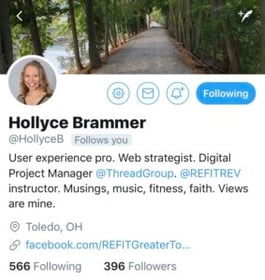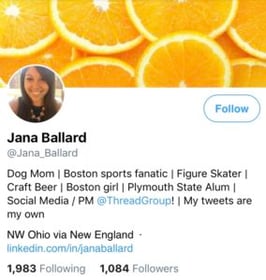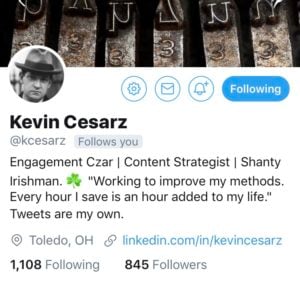HOW TO PRODUCE AND MAINTAIN AN INFLUENCER INVENTORY
What is influencer marketing?
Influencer marketing is a strategic method of bringing attention to your brand or product by harnessing respected voices in your industry. The use of blogging and social media are common in online marketing, and because of that the digital landscape is saturated with messaging. Influencer marketing can amplify your message and make your brand stand out from the crowd.
Influencers are personalities or names that have some measure of clout in a certain realm. Examples of influencers are as follows:
- Bloggers who write about topics in your industry, particularly those who have a large online following
- Subject-matter experts in a field
- Current customers
- Celebrities or well-known names
Thread's Influencer Marketing Method
Finding influencers



Interestingly, a whopping 75% of marketers consider finding the right influencers to be the most challenging part of this outreach strategy. Thread utilizes several methods to find influencers for our clients:
- Practice social listening. Also known as social media monitoring, the idea is to listen for mentions of your brand and products by other online sources. While it seems like an arduous task, there are plenty of social media monitoring tools available to help. In addition to hashtags, the tools can track URLs and keywords. Frequently, the tools can calculate the “reach” or “influence” of each source by tallying the number of occurrences it finds of those links and keywords. Some social listening tools to consider:
- Searching for blogs on specific topics. It can be a good idea to use Google or your other favorite search engine to search for a name and limit the results to the past 24 hours, past week or past month. Content Marketing Institute recommends using the formula [your industry] + “blog.” Consider inquiring not to just the top sites, as these likely receive tons of inquiries, but try ones further down the list who might be seeking more attention.
- Read other industry-related blogs and pay attention to key names. One of the most effective ways to make loyal fans of your product is to get backing from someone that customers trust.
- Keep an eye on social media mentions. Chances are you’re your current customers are the most likely demographic to mention your brand or communicate with you in online spaces. These folks can easily become sources for testimonials and other nuggets of positive content. Per Content Marketing Institute, “current customers often make more of an impact on decision-making than a neutral third party.” Thread harnesses the power of current customers by using positive stories in #TestimonialTuesday posts once we receive the writer’s permission to do so.
Creating an influencer inventory
As you encounter influencers, you will want to keep an inventory of which ones you have already communicated with as well as other details about their content and areas of expertise. This inventory will make it easy for you to reach out to specific influencers as you develop blog post topics. For example, Thread recently wrote a long-form blog post about lifestyle tips for parents of children with juvenile diabetes for a client. I referenced our influencer list to see which bloggers wrote about either diabetes or juvenile diabetes so I could reach out to them to contribute to the article.
An influencer inventory (spreadsheets work well for us) could contain the following elements:
- Name of blog
- Name of blog author
- Interest(s)
- Physical location
- Social channels/online presences (Include mention of blog here if they have one. Some might only have social channels.)
- Notes about the personality that make him/her unique
- Contact information
- Testimony (if one was offered)
- Permission granted to use testimony
Building rapport and reaching out to influencers
Anyone on your influencer list who is a blogger with many followers or has even a relative amount of fame likely gets hundreds of inquiries for their input or cross-promotion efforts in each week. Therefore, it will take more than just blindly reaching out to an “info@” email address to make a real connection. Some tips for building a relationship:
- Follow them in their online spaces and affirm their content. This action can look like following and “Liking” posts on a Facebook page, Retweeting on Twitter, or leaving thoughtful comments on blog posts.
- Use your networks to see if you have a common connection. You never know if you might have mutual connections, especially if you have other connections in that influencer’s industry. See if your common connection would be willing to introduce you. You will instantly be more memorable than one of the hundreds of other anonymous inquiries.
- Use email, but make it more personal and thoughtful. Try to find an individual’s address instead of the generic address for the whole blog. Then, craft a message that is complimentary yet gets to the point quickly. Content Marketing Institute suggests the below template:
- “We haven’t connected before but I work for [Company X] and have enjoyed your blogs on [Topic Y]. We’d love to collaborate with you on [Content Area Z].”
Making an enticing offer
Remember that just like you, your influencers have limited time and energy. They want the partnerships to which they agree to be winning deals for them as well.
Some influencers might be willing to offer a quick quote or content snippet as part of a compilation article for just cross-promotion as the reward. Others who are regularly compensated for their blogging efforts might refuse to do anything unpaid, which is understandable. When negotiating business with your influencer, try to come up with a proposal that will benefit both parties equally. It is tempting as a brand marketer to just enlist their help for distribution, but find a way to offer cross-promotion to them as well. For example, if the writer also sells or makes products of some sort, offer to promote their store through your brand’s online channels.
For influencers that do require compensation, it might not need to be monetary. Product samples, affiliate discounts, and even offering a percentage of the revenue gained from that influencer’s help could be acceptable offerings.
If your budget is too small and resources too limited to offer compensation at all, consider shifting your influencer pool away from industry experts and more toward current customers who are very satisfied with your services. Thread has found great success in reaching out to happy customers who post ratings and stories online. Thus far only a small percentage have refused to let us re-post their testimonies and none of them have asked for compensation.
Happy influencing!

